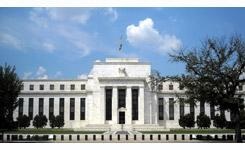Fed Officials’ Speeches And Gold
 Fed officials have recently given several speeches. What can we learn from them?
Fed officials have recently given several speeches. What can we learn from them?
This was a busy month for U.S. central bankers as they tried to telegraph their intention to hike interest rates in December. On November 12, Fed Vice Chairman Stanley Fischer discussed the effects of the appreciation of the greenback on the U.S. economy. His speech was rather mixed. On the one hand, he pointed out that the roughly 15 percent appreciation of the U.S. dollar since July 2014 is likely to cause accumulative 2.5-percent reduction in GDP over three years and to depress core PCE inflation by at least 0.25-0.5 percentage point this year. Thus, he concluded that a “greater degree of monetary accommodation seems appropriate given the adverse effects on U.S. aggregate demand coming from the rise in the dollar”. On the other hand, Fischer said that the U.S. economy was weathering the headwinds of a stronger greenback reasonably well and he reiterated that the FOMC had indicated last month that it might be appropriate to raise interest rates.
One week later, he explicitly stated that Fed das been doing everything to clearly telegraph their plans and not to surprise the markets:
"We have done everything we can to avoid surprising the markets and governments when we move, to the extent that several emerging market (and other) central bankers have, for some time, been telling the Fed to ’just do it.’”
The most hawkish FOMC member, Richmond Fed President Jeffrey Lacker, called for a hike, as always. Cleveland Fed President Loretta Mester echoed his demands, saying that the Fed is in a strong position to raise the funds rate, because the U.S. economy is steadily improving.
Other Fed officials also signaled their readiness to hike in December (if data supports such a move, of course). However, what is more important is that they started shifting the focus to the future path of the federal funds rate. For example, Chicago Fed President Charles Evans said: “the best policy is to take a very gradual approach to normalization”. Atlanta Fed Governor Dennis Lockhart agreed that the pace of rate increases should be slow. New Dallas Fed president Robert Kaplan even pointed out that the normalization process would still be accommodative, so it should not be considered as a tightening of policy.
The key takeaway is that the Fed officials are changing their focus in communicating from the date of the first liftoff to the future path of rate increases. Indeed, it seems that the expected path is more important for the gold market. The whole path, not only the first hike, should be priced, to some extent, into the price of gold. In other words, if the Fed does raise interest rates in December, markets will turn their attention to the next interest rate move and we will have the replay of the last year, when everybody wondered when the U.S. central bank would hike. Therefore, after a December hike, the gold may remain under pressure due to expectations of the next hike in spring of 2016. On the other hand, the Fed’s more gradual approach to normalization than currently expected should give the yellow metal some breath.
Arkadiusz Sieron
Sunshine Profits‘ Gold News Monitor and Market Overview Editor















